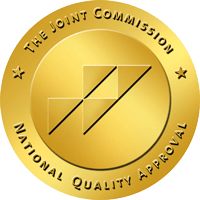Heroin use is a problem among all ages and income levels. Between 2002 and 2013, the heroin epidemic developed amidst a government crackdown on opioid prescriptions. The biggest increases in use occurred among women and those with relatively high incomes and private insurance. Knowing the dangers and risks of heroin addiction can help people understand why the epidemic continues.
Heroin Dangers and Risk for Addiction
 Most people hear others talk about how dangerous heroin is, but they don’t always understand why. The main reason is that it’s highly addictive, which is why the government has banned it. However, the drug is dangerous to other aspects of health too. For example, it can cause shallow and slow breathing and lead to coma and death.
Most people hear others talk about how dangerous heroin is, but they don’t always understand why. The main reason is that it’s highly addictive, which is why the government has banned it. However, the drug is dangerous to other aspects of health too. For example, it can cause shallow and slow breathing and lead to coma and death.
Another danger with heroin is an overdose, which can cause problems of its own, such as brain damage. The risk for overdose increases when people combine the drug with other substances. Most commonly, it’s mixed with alcohol and cocaine. In addition, those who inject the drug are at greater risk for contracting infectious diseases.
People who don’t suffer from these obvious dangers keep using heroin and may not intend to stop. Eventually, they develop an addiction, which requires help from a heroin addiction treatment center. Those with the biggest risk may also have an addiction to prescription opioids, cocaine, alcohol, or marijuana.
How the Heroin Epidemic Developed
The series of events that led to the opioid epidemic occurred in the 1990s and early 2000s. Drug makers went on a huge marketing spree that reassured the safety and low addiction risk of new painkillers. However, the drugs have similar chemical structures to heroin. In fact, they either come from or imitate the same properties as opium, which is where heroin comes from.
As doctors prescribed these medications, more and more people developed a dependency on them. In response, the government restricted how much doctors can prescribe. Despite these limits and a small period of use, some people still developed an addiction.
Cravings led those with the disease to seek an alternative with similar effects. Seeing them as prime targets, heroin makers flooded the market to meet their cravings. In fact, the majority of heroin users developed a taste for the drug after having a painkiller prescription.
As a result, the heroin epidemic took form. Since then, the government has loosened its opioid prescribing restrictions on doctors. Because of that, more people can get opioid painkillers. Rectifying this cycle could take decades.
Treatment for Heroin and Opioid Addiction
Whether you have a heroin or prescription opioid addiction, treatment is available. As an addiction treatment center, Pillars Recovery can provide the help that you need. We have a range of programs so that we can address whatever needs that you have. Some examples include:
- Drug detox
- Residential treatment
- Transitional living
- Chronic pain treatment
- Dual diagnosis treatment
Don’t let a prescription pain pill make you part of the heroin epidemic. Get the treatment that you need to live a healthy, drug-free lifestyle. Reach out to one of our compassionate staff members at 866-782-0247 to get more information about our services.






